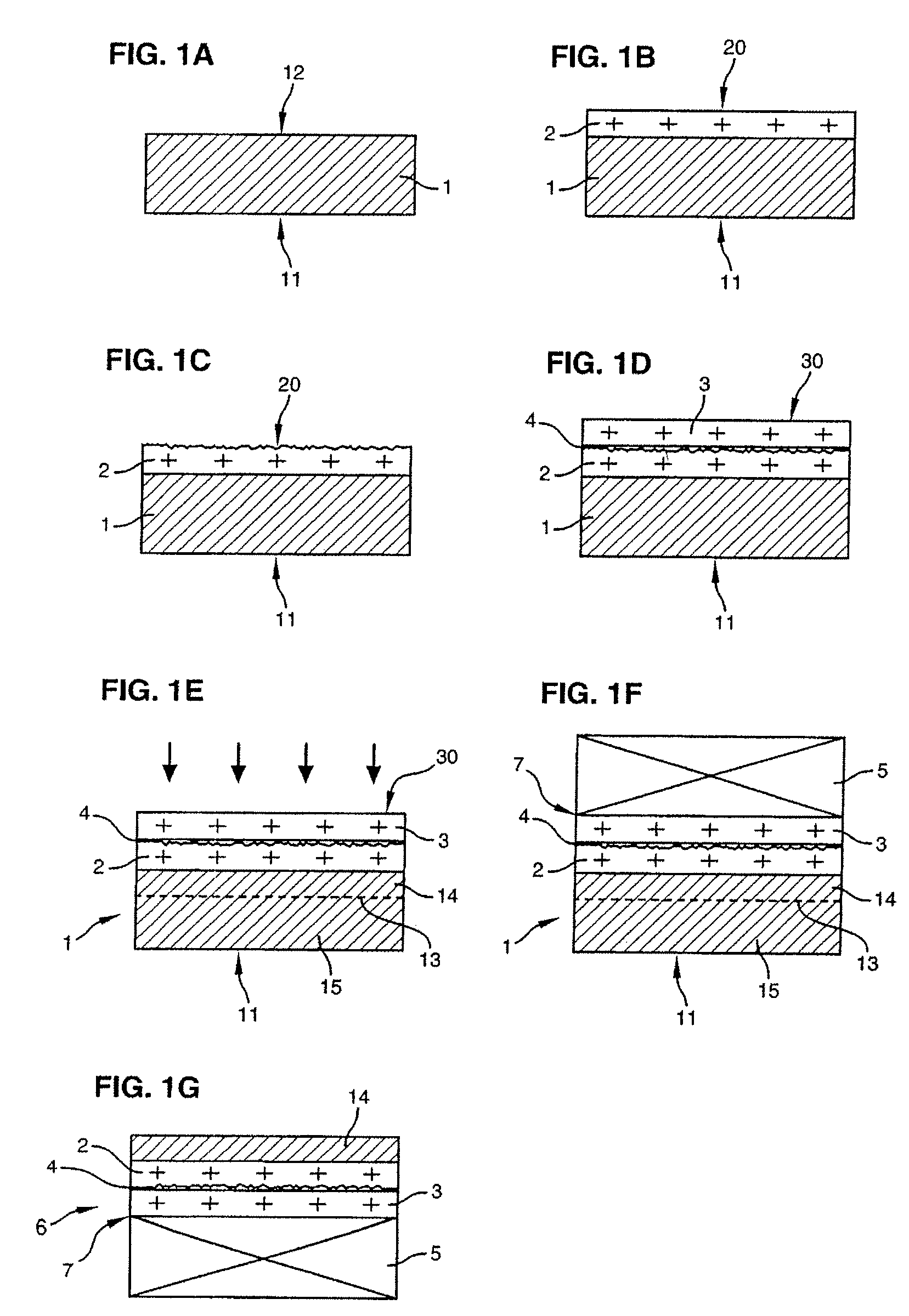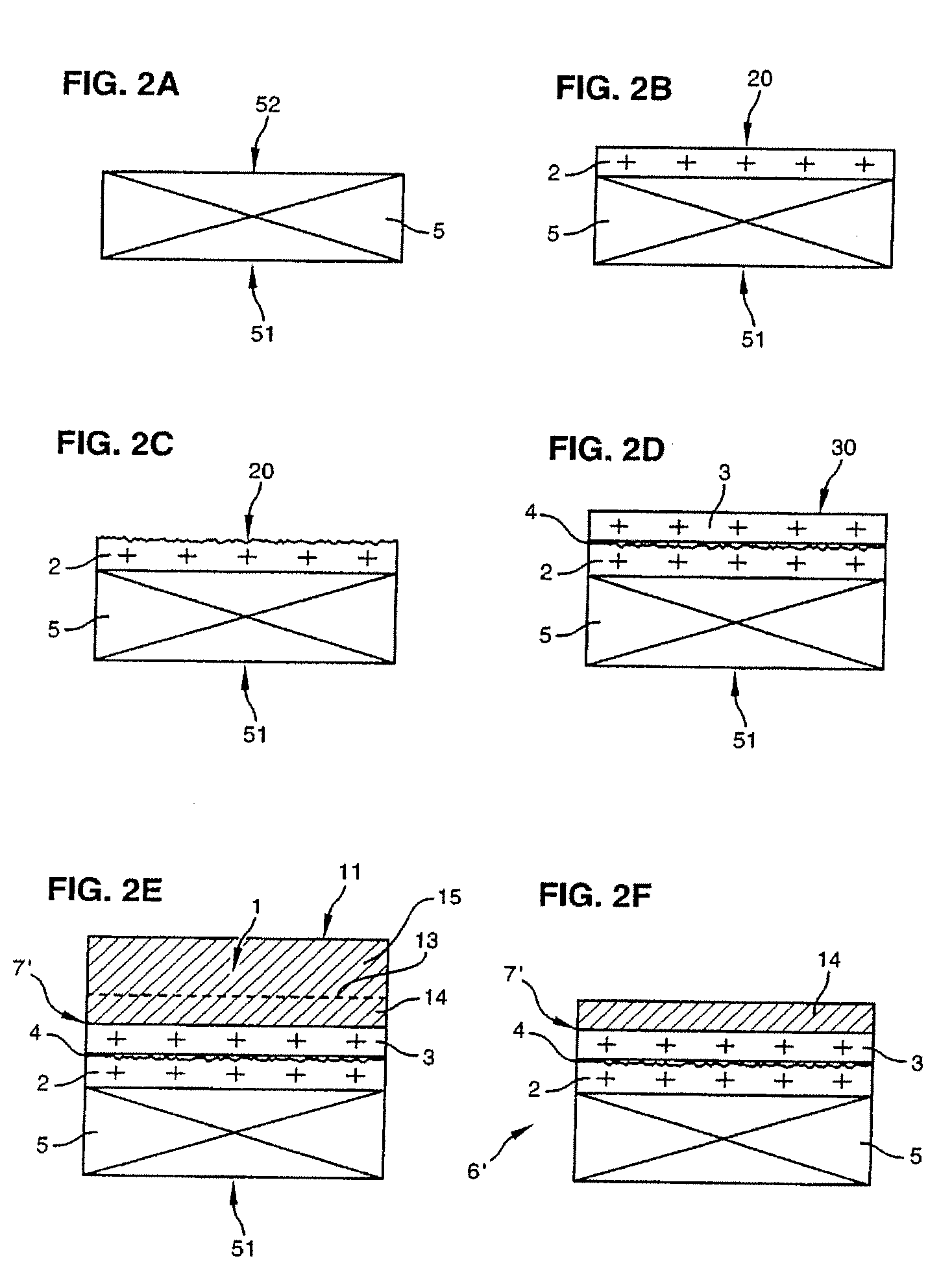Fabrication of hybrid substrate with defect trapping zone
a hybrid substrate and defect trapping technology, applied in the direction of basic electric elements, semiconductor/solid-state device manufacturing, electric devices, etc., can solve the problem that the layer is liable to modify the electrical properties of the final structure, and achieve the effect of reducing the cost of production
- Summary
- Abstract
- Description
- Claims
- Application Information
AI Technical Summary
Benefits of technology
Problems solved by technology
Method used
Image
Examples
first embodiment
[0064]the process according to the invention will now be described with reference to FIGS. 1A to 1G.
[0065]FIG. 1A shows a substrate 1 called a “donor” substrate, as this is the one which provides the active layer in the hybrid substrate to be obtained.
[0066]The donor substrate 1 has two opposed faces 11 and 12, called “rear” and “front” faces respectively. It may be a monolayer or multilayer substrate. As an example of a multilayer donor substrate, it is possible to use a bulk substrate coated with an epitaxially grown layer, such as a bulk silicon substrate coated with an epitaxially grown germanium layer.
[0067]The donor substrate 1 consists at least partly of a semiconductor material, more precisely one of those commonly used in the electronics field, especially silicon. The donor substrate 1 may also be, for example, made of germanium (Ge), gallium nitride (GaN), gallium arsenide (GaAs) or silicon-germanium (SiGe). As shown in FIG. 1B, a first insulator layer 2 is then formed or ...
second embodiment
[0089]A second embodiment will now be described with reference to FIGS. 2A to 2F. According to this embodiment, the successive insulator layers 2 and 3 are deposited on the front face of the receiver substrate 5 instead of the front face of the donor substrate 1. The rear and front faces of the substrate 5 bear the references 51 and 52 respectively. The choice of insulating materials constituting the layers 2 and 3 and the techniques for forming or depositing the layers 2 and 3 are identical to those described above. The same applies to the roughening techniques. The same elements bear the same numerical references.
[0090]FIG. 2E shows that the source substrate 1 has undergone the step of atomic species implantation, allowing the zone of weakness 13 to be formed, before being bonded by molecular adhesion onto the insulator layer 3. To do this, the source substrate 1 may optionally be temporarily covered with an oxide layer making it easier to implement the aforementioned SMART-CUT® p...
PUM
 Login to View More
Login to View More Abstract
Description
Claims
Application Information
 Login to View More
Login to View More - R&D
- Intellectual Property
- Life Sciences
- Materials
- Tech Scout
- Unparalleled Data Quality
- Higher Quality Content
- 60% Fewer Hallucinations
Browse by: Latest US Patents, China's latest patents, Technical Efficacy Thesaurus, Application Domain, Technology Topic, Popular Technical Reports.
© 2025 PatSnap. All rights reserved.Legal|Privacy policy|Modern Slavery Act Transparency Statement|Sitemap|About US| Contact US: help@patsnap.com



